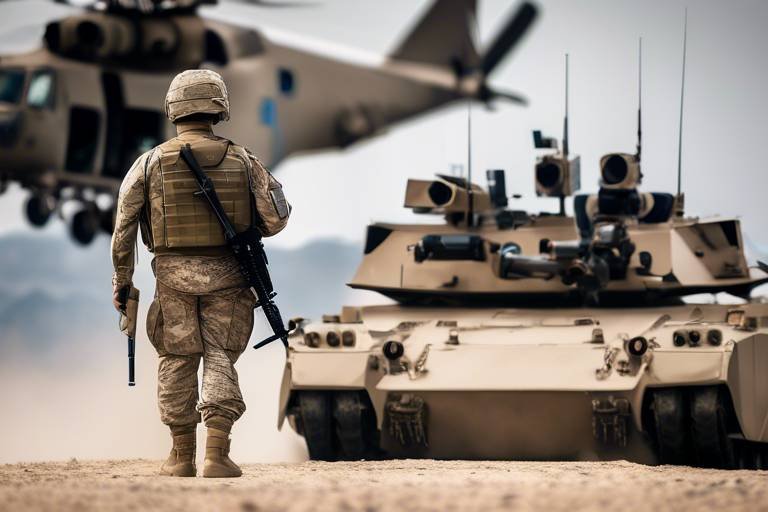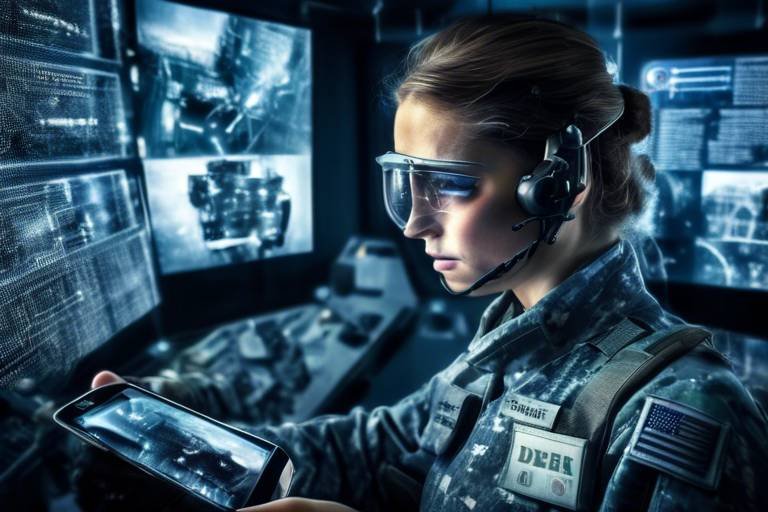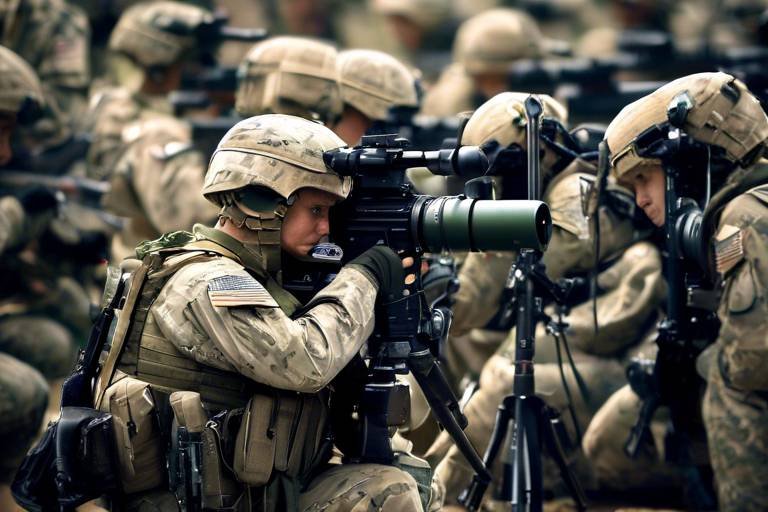Exploring the Capabilities of the Eurofighter Typhoon
The Eurofighter Typhoon stands as a testament to modern engineering and international collaboration in military aviation. This multirole fighter jet is not just a machine; it embodies the pinnacle of technological advancements, agility, and versatility, making it a vital asset for air forces around the globe. With its sleek design and powerful capabilities, the Typhoon is engineered to tackle a multitude of operational roles, ranging from air superiority to ground attack missions. But what truly sets the Typhoon apart from its competitors? Let’s dive into the remarkable features that make it a standout in the skies.
The design of the Eurofighter Typhoon is the result of a remarkable collaboration among several European nations, including the UK, Germany, Italy, and Spain. This partnership has led to the creation of a fighter jet that is not only agile and fast but also incorporates advanced stealth capabilities. The Typhoon's aerodynamic shape reduces its radar cross-section, allowing it to evade detection while ensuring high-speed performance. Imagine a bird of prey soaring through the sky, expertly navigating the currents; that’s the Typhoon in action, showcasing its ability to dominate various combat scenarios.
Equipped with cutting-edge avionics, the Eurofighter Typhoon is a marvel of modern technology. Its superior radar, navigation, and weapon systems empower pilots to engage targets with unmatched precision. In the chaos of a battlefield, situational awareness is everything. The Typhoon’s advanced systems provide real-time data, allowing pilots to make informed decisions under pressure. It’s like having a highly skilled co-pilot, constantly analyzing the environment and ensuring that every move is calculated and effective.
At the heart of the Typhoon's avionics is its advanced electronically scanned array (AESA) radar. This technology enhances target detection and tracking capabilities, making it crucial for both air-to-air and air-to-ground missions. With the ability to scan multiple targets simultaneously, the Typhoon can identify threats and respond swiftly, ensuring that it remains one step ahead of adversaries. Think of it as having a 360-degree vision; the pilot can see everything happening around them, even before it unfolds.
Incorporating sophisticated electronic warfare systems, the Typhoon can effectively jam enemy radar and communications. This capability is essential for ensuring mission success while minimizing the risk of detection. Imagine being a ghost in the night, unseen and unheard, as you maneuver through hostile territory. The Typhoon’s electronic warfare systems provide that level of stealth and security, allowing it to engage in operations that would be impossible for less advanced aircraft.
Robust data link systems allow the Eurofighter Typhoon to share real-time information with allied forces. This capability enhances coordination and operational efficiency during joint missions. In a world where information can be the difference between victory and defeat, the Typhoon acts as a hub of communication, ensuring that all allied forces are on the same page. It’s like being part of a well-orchestrated symphony, where every note contributes to a harmonious outcome.
The Eurofighter Typhoon is versatile in armament, capable of deploying a wide range of air-to-air and air-to-ground munitions. This flexibility makes it a formidable asset in any combat situation. Whether it’s engaging enemy aircraft or conducting precision strikes against ground targets, the Typhoon is equipped to handle it all. Its arsenal includes missiles, bombs, and advanced targeting systems, ensuring that it can adapt to any mission profile.
The Typhoon serves multiple roles, showcasing its adaptability to meet diverse mission requirements in modern warfare. From air superiority to ground attack and reconnaissance, the Typhoon is designed to excel in various operational contexts. This versatility is akin to a Swiss Army knife—capable of tackling any challenge that comes its way.
In air superiority roles, the Typhoon excels at engaging enemy aircraft. Utilizing its speed and agility, it dominates the skies, ensuring the safety of friendly forces. The Typhoon’s ability to outmaneuver opponents and strike with precision makes it a critical asset in maintaining air dominance.
With precision-guided munitions and advanced targeting systems, the Eurofighter Typhoon effectively conducts ground attack missions. It strikes high-value targets with minimal collateral damage, showcasing its effectiveness in modern warfare. Picture a surgeon performing delicate operations—this is how the Typhoon approaches ground attacks, ensuring that every strike is as precise as possible.
The development and deployment of the Eurofighter Typhoon highlight significant international collaboration among European nations. This partnership fosters shared technological advancements and joint operational capabilities, ensuring that the Typhoon remains at the forefront of military aviation.
Participating in joint exercises enhances interoperability among allied forces. These exercises allow pilots to train together and refine tactics in realistic combat scenarios. It’s like a team of athletes preparing for a championship; practice makes perfect, and collaboration leads to success.
The Eurofighter Typhoon has achieved notable export success, with several countries adopting it into their air forces. This widespread acceptance further solidifies its reputation as a leading multirole fighter jet, proving that its capabilities are recognized and valued on a global scale.
- What makes the Eurofighter Typhoon unique? The Typhoon combines advanced avionics, exceptional agility, and versatile armament, making it suitable for various combat roles.
- Which countries operate the Eurofighter Typhoon? Several countries, including the UK, Germany, Italy, and Spain, operate the Typhoon, with additional exports to other nations.
- How does the Typhoon maintain situational awareness? Its advanced radar and data link systems provide real-time information, ensuring pilots are aware of their surroundings during missions.

Design and Development
The Eurofighter Typhoon represents a remarkable feat of engineering, the result of a collaborative effort among several European nations, including the UK, Germany, Italy, and Spain. This multirole fighter jet was designed with a clear focus on enhancing agility, speed, and stealth capabilities. As military aviation evolves, the need for aircraft that can adapt to various combat scenarios has become paramount, and the Typhoon meets this demand with flying colors.
One of the standout features of the Typhoon's design is its delta wing structure, which not only contributes to its aerodynamic efficiency but also allows for exceptional maneuverability. Imagine a bird gliding effortlessly through the sky; that's how the Typhoon operates, thanks to its sleek design that minimizes drag and maximizes lift. The aircraft's lightweight composite materials further enhance its performance, enabling it to achieve incredible speeds while maintaining stability during complex aerial maneuvers.
Moreover, the development of the Eurofighter Typhoon was not just about creating a fighter jet; it was about setting a new standard in military aviation. The collaborative nature of its design process has led to shared technological advancements that have benefited all participating nations. For instance, the integration of advanced materials and manufacturing techniques has paved the way for innovations that extend beyond just the Typhoon, influencing future aircraft designs.
In terms of operational effectiveness, the Typhoon was built to thrive in a variety of roles. Its design accommodates not only air superiority missions but also ground attack and reconnaissance operations. This versatility is a game-changer in modern warfare, where the ability to switch roles on the fly can mean the difference between mission success and failure. The aircraft's ability to carry a diverse array of weapons and systems is a testament to its adaptable design.
To further illustrate the Typhoon's design attributes, consider the following table that summarizes its key design features:
| Feature | Description |
|---|---|
| Wing Design | Delta wing structure for enhanced maneuverability and speed. |
| Materials | Lightweight composite materials for improved performance. |
| Role Versatility | Designed for air superiority, ground attack, and reconnaissance. |
| Collaboration | Joint development among multiple European nations, fostering shared technology. |
In conclusion, the of the Eurofighter Typhoon exemplify a commitment to innovation and collaboration in military aviation. Its advanced features not only enhance its operational effectiveness but also set a benchmark for future fighter jets. As we continue to explore its capabilities, one can only marvel at how this aircraft has redefined what it means to be a multirole fighter in today's complex battlefield environments.

Advanced Avionics
The Eurofighter Typhoon is not just another fighter jet; it’s a technological marvel that redefines what modern avionics can achieve. Imagine soaring through the skies, every detail of the battlefield laid out before you like a digital map in a video game. This is the reality for Typhoon pilots, thanks to its cutting-edge avionics. These systems are designed to enhance the pilot's situational awareness, allowing for split-second decisions that can mean the difference between mission success and failure.
At the core of the Typhoon's avionics suite is its superior radar, navigation, and weapon systems. The radar system, for instance, is not just any radar; it’s a sophisticated piece of technology that can detect and track multiple targets simultaneously. This capability is crucial in complex environments where threats can come from any direction. The Typhoon's radar is complemented by advanced navigation systems that ensure pilots can operate effectively even in adverse conditions.
One of the standout features of the Eurofighter Typhoon is its advanced electronically scanned array (AESA) radar. This technology allows for enhanced target detection and tracking capabilities, crucial for both air-to-air and air-to-ground missions. With the AESA radar, pilots can identify enemy aircraft from great distances, giving them a tactical advantage before engaging in combat. This radar system is not only powerful but also versatile, adapting to various mission profiles seamlessly.
In addition to its radar capabilities, the Typhoon is equipped with sophisticated electronic warfare systems. These systems can effectively jam enemy radar and communications, creating a protective shield around the aircraft. This is akin to wearing an invisibility cloak; it allows the Typhoon to operate in hostile environments without being detected. By disrupting enemy signals, the Typhoon ensures that its missions can be conducted with a lower risk of interception.
Robust data link systems further enhance the Typhoon's operational capabilities. These systems allow for real-time information sharing with allied forces, creating a networked battlefield where every pilot is aware of friendly and enemy movements. Imagine a giant chessboard where each piece knows the position of others; this is how the Typhoon operates in conjunction with other aircraft. The ability to share data enhances coordination and operational efficiency during joint missions, making the Typhoon a formidable asset in coalition operations.
| Avionics Feature | Description |
|---|---|
| AESA Radar | Provides enhanced target detection and tracking capabilities for air-to-air and air-to-ground missions. |
| Electronic Warfare Systems | Jams enemy radar and communications, reducing the risk of detection. |
| Data Link Systems | Facilitates real-time information sharing with allied forces for improved coordination. |
In conclusion, the advanced avionics of the Eurofighter Typhoon are not merely enhancements; they are essential components that empower pilots to accomplish their missions effectively. With a combination of state-of-the-art radar, electronic warfare capabilities, and robust data links, the Typhoon stands as a testament to what modern military aviation can achieve. It’s not just about flying; it’s about dominating the skies with unparalleled precision and coordination.
- What makes the Eurofighter Typhoon's avionics unique? The Typhoon features advanced systems like AESA radar, electronic warfare capabilities, and robust data links that enhance situational awareness and operational effectiveness.
- How does the electronic warfare system work? The electronic warfare system jams enemy radar and communications, allowing the Typhoon to operate stealthily in hostile environments.
- Can the Typhoon share data with other aircraft? Yes, the Typhoon's data link systems enable real-time information sharing with allied forces, enhancing coordination during missions.

Radar Technology
The Eurofighter Typhoon is equipped with an advanced electronically scanned array (AESA) radar system that sets a new standard in aerial combat technology. This sophisticated radar not only enhances the aircraft's target detection capabilities but also significantly improves tracking efficiency. Imagine trying to find a needle in a haystack—now picture doing it in a vast, chaotic battlefield filled with enemy aircraft and ground threats. The Typhoon's AESA radar acts like a super-efficient metal detector, capable of pinpointing targets with incredible accuracy, even in the most cluttered environments.
One of the standout features of the Typhoon's radar technology is its ability to operate in multiple modes, allowing pilots to switch between air-to-air and air-to-ground missions seamlessly. This versatility is crucial in modern warfare, where the lines between different types of combat are often blurred. For instance, during a mission, a pilot might need to engage an enemy fighter while simultaneously tracking ground targets. The Typhoon's radar can handle this dual responsibility without missing a beat.
In addition, the AESA radar offers a significant advantage in terms of range. It can detect and track targets at distances that were previously unimaginable. This capability not only extends the operational reach of the Typhoon but also provides a tactical edge over adversaries. The radar can detect incoming threats from afar, giving pilots precious seconds to react and engage or evade as necessary. This is akin to having a sixth sense in the air—knowing what’s coming before it even appears on the horizon.
Moreover, the Typhoon's radar technology incorporates advanced signal processing techniques that filter out noise and clutter, ensuring that pilots receive only the most relevant information. This capability is essential in combat scenarios where every second counts and the ability to make quick decisions can mean the difference between success and failure. With such a powerful radar system, pilots can maintain a high level of situational awareness, allowing them to focus on executing their mission rather than getting bogged down by irrelevant data.
To summarize, the Eurofighter Typhoon's radar technology is a game-changer in the realm of aerial combat. Its AESA radar system provides enhanced detection, tracking, and operational versatility, ensuring that pilots are always one step ahead of the competition. As military aviation continues to evolve, the Typhoon stands out as a beacon of innovation, setting the bar high for future fighter jets.
- What is AESA radar?
AESA (Active Electronically Scanned Array) radar is a type of radar that uses multiple small antennas to transmit and receive signals, allowing for faster and more accurate target detection. - How does the Typhoon's radar improve situational awareness?
The radar processes and filters information, providing pilots with relevant data in real-time, which is crucial for making informed decisions during combat. - Can the radar operate in different combat scenarios?
Yes, the Typhoon's radar can switch between air-to-air and air-to-ground modes, allowing for versatility in various mission types.
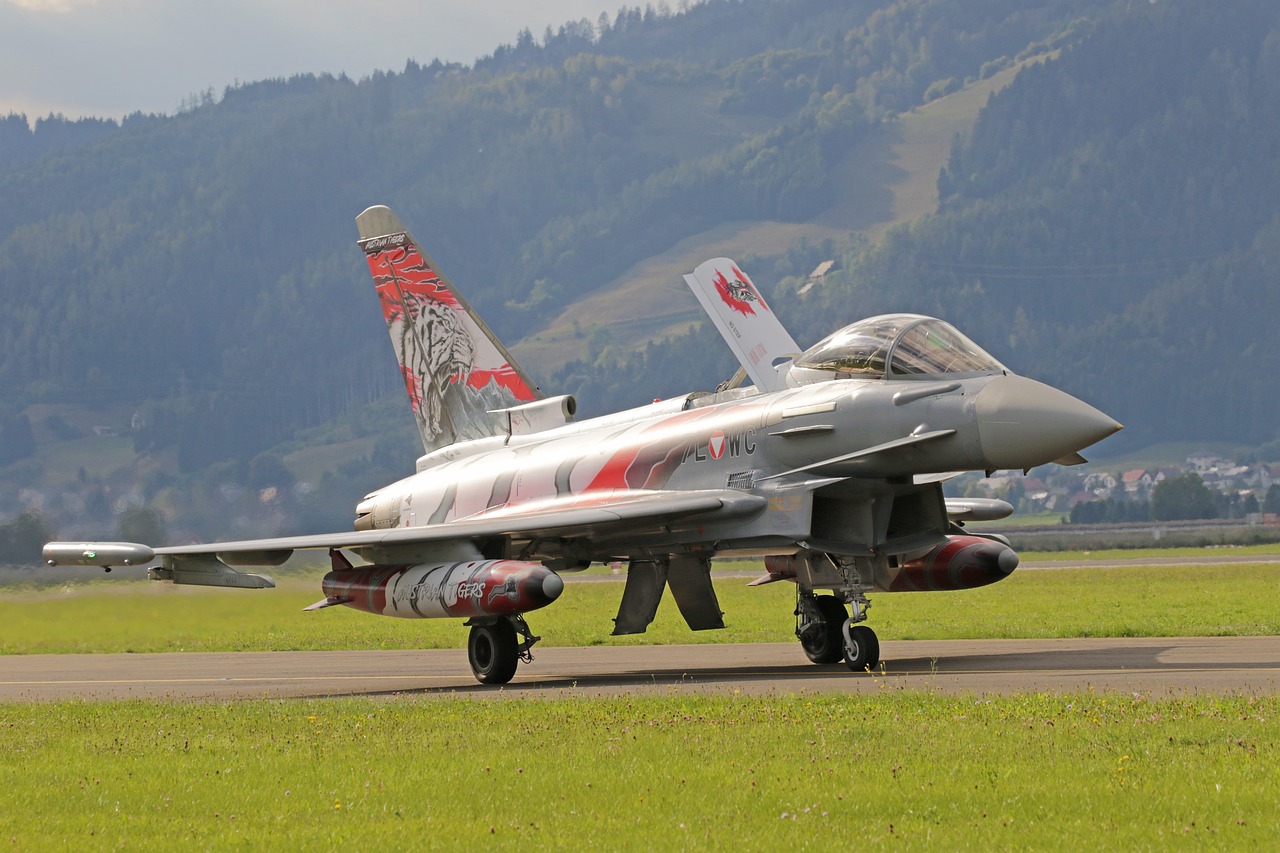
Electronic Warfare Systems
The Eurofighter Typhoon is not just a fighter jet; it’s a technological marvel that incorporates sophisticated electronic warfare systems designed to ensure dominance in the battlefield. Imagine being in a high-stakes game of chess, where every move counts, and your opponent is trying to outsmart you. The Typhoon's electronic warfare capabilities are like having the ultimate strategy guide at your disposal, allowing pilots to anticipate enemy actions and counter them effectively.
At the heart of these systems is the ability to jam enemy radar and communications. This means that while the Typhoon is engaged in a mission, it can create a protective bubble around itself, making it difficult for adversaries to track or target the aircraft. This form of electronic countermeasure is crucial, especially when operating in contested airspace where threats are omnipresent.
Moreover, the Typhoon’s electronic warfare suite is designed to operate seamlessly with its other advanced systems. For instance, when the jet detects a radar signal from an enemy missile system, it can quickly analyze the threat and decide whether to jam the signal or deploy countermeasures. This capability not only increases the survivability of the aircraft but also enhances the overall mission success rate.
To illustrate the effectiveness of the Eurofighter Typhoon's electronic warfare systems, consider the following table, which highlights some key features:
| Feature | Description |
|---|---|
| Jamming Capability | Ability to disrupt enemy radar and communication systems, creating confusion among adversaries. |
| Signal Intelligence | Collects and analyzes signals from enemy systems to provide valuable information to the pilot and command. |
| Threat Detection | Identifies potential threats in real-time, allowing for quick decision-making during operations. |
| Integration with Avionics | Works in conjunction with the Typhoon's avionics for enhanced situational awareness and response. |
In addition to these features, the Typhoon's electronic warfare systems also support network-centric warfare. This means that the aircraft can share its electronic warfare data with allied forces in real-time, creating a comprehensive picture of the battlefield. Imagine a group of friends playing a video game together; the more information they share, the better their chances of winning. This collaborative approach enhances mission effectiveness and helps to neutralize threats before they become critical.
In conclusion, the Eurofighter Typhoon’s electronic warfare systems are a game-changer in modern air combat. They not only protect the aircraft but also provide a strategic advantage that can turn the tide of battle. With these advanced capabilities, the Typhoon stands ready to face any challenge, ensuring that it remains a top choice for air forces around the globe.
- What is electronic warfare? Electronic warfare refers to the use of electromagnetic spectrum to disrupt enemy operations while ensuring friendly forces can operate effectively.
- How does the Typhoon's jamming capability work? The Typhoon can emit signals that interfere with enemy radar and communication systems, making it difficult for them to track or engage the aircraft.
- Can the Typhoon share electronic warfare data with allies? Yes, the Typhoon is equipped with systems that allow it to share real-time data with allied forces, enhancing coordination during missions.
- What are the benefits of network-centric warfare? Network-centric warfare improves situational awareness, increases operational efficiency, and enhances the overall effectiveness of military operations.

Data Link Systems
The Eurofighter Typhoon is equipped with robust that play a crucial role in modern aerial warfare. These systems are designed to facilitate real-time communication and data sharing between the Typhoon and other allied forces. Imagine being in the cockpit of this advanced fighter jet, where every piece of information you need is at your fingertips, seamlessly connecting you with your squadron and command. This capability not only enhances situational awareness but also significantly boosts operational efficiency during missions.
One of the standout features of the Typhoon's data link systems is their ability to transmit a variety of data types, including radar information, targeting data, and tactical updates. This means that pilots can receive real-time intelligence about enemy positions and movements, allowing them to make informed decisions in the heat of battle. The data link systems ensure that every fighter in the air is essentially part of a single, cohesive unit, working together to achieve mission objectives.
Furthermore, the integration of these systems supports the network-centric warfare approach, where information dominance is key to success. By sharing data with other platforms, such as ground forces and naval units, the Typhoon can execute coordinated strikes and defensive maneuvers that would be impossible without this level of interconnectivity. This capability is particularly vital in joint operations, where multiple branches of the military are involved.
To illustrate the importance of data link systems in the Eurofighter Typhoon, consider the following table that summarizes their key features:
| Feature | Description |
|---|---|
| Real-time Data Sharing | Allows pilots to receive and send critical information instantly. |
| Enhanced Situational Awareness | Provides a comprehensive view of the battlefield, improving decision-making. |
| Interoperability | Facilitates communication between different military branches and allied forces. |
| Network-Centric Warfare | Supports a collaborative approach to combat operations, maximizing effectiveness. |
In conclusion, the data link systems of the Eurofighter Typhoon are not just a technological marvel; they represent a fundamental shift in how air combat is conducted today. By ensuring that pilots have access to real-time information and can communicate seamlessly with allies, these systems enhance the Typhoon's operational capabilities, making it a formidable player in modern air warfare.
- What are data link systems?
Data link systems are communication networks that allow aircraft to share real-time information with other units and command centers. - How do data link systems enhance combat effectiveness?
They provide pilots with critical information about enemy positions and movements, allowing for better decision-making and coordinated attacks. - Can the Eurofighter Typhoon operate without data link systems?
While it can operate independently, the effectiveness of missions is significantly enhanced with data link systems in place.
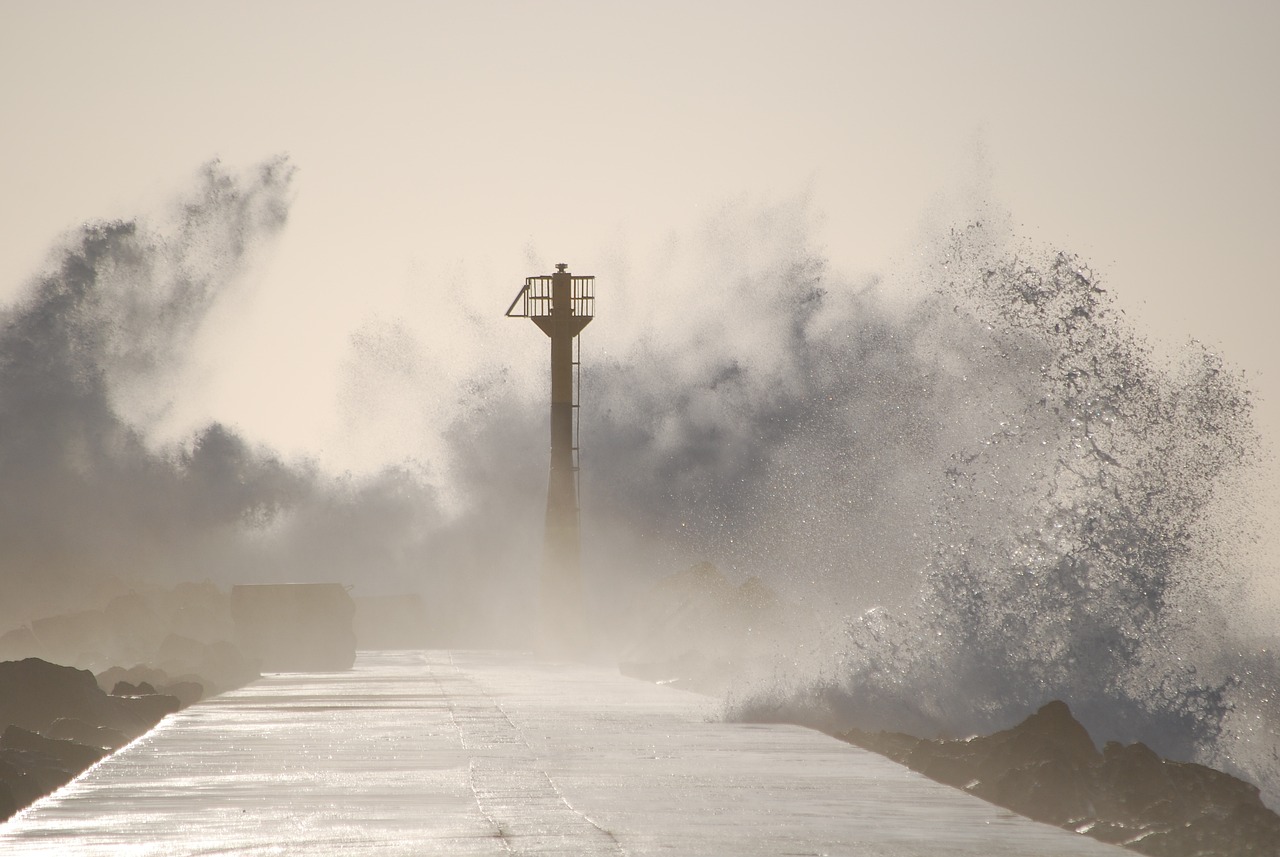
Weaponry and Armament
The Eurofighter Typhoon is not just a pretty face in the sky; it’s a true powerhouse when it comes to weaponry and armament. This multirole fighter jet is designed to be a versatile combat platform, capable of deploying a wide array of munitions that cater to various mission profiles. Imagine it as a Swiss Army knife of the skies, equipped to handle everything from dogfights to precision strikes on ground targets. The flexibility of the Typhoon’s armament allows it to adapt to the ever-changing dynamics of modern warfare.
One of the standout features of the Typhoon is its ability to carry a diverse range of weapons, which can be tailored to specific operational needs. The aircraft can be fitted with a combination of air-to-air missiles, air-to-ground munitions, and precision-guided bombs. This versatility ensures that the Typhoon can engage enemy aircraft while also delivering devastating strikes on ground targets. The integration of advanced targeting systems further enhances its capability to hit high-value targets with pinpoint accuracy.
To give you a clearer picture, here’s a breakdown of some of the key armaments that the Eurofighter Typhoon can carry:
| Type of Armament | Description |
|---|---|
| Air-to-Air Missiles | Includes the Meteor and AIM-120 AMRAAM, designed for long-range engagement and superior tracking capabilities. |
| Precision-Guided Munitions | Such as the Paveway laser-guided bombs, allowing for accurate strikes with minimal collateral damage. |
| Air-to-Ground Munitions | Includes a variety of bombs and missiles, allowing for effective ground attack operations. |
Moreover, the Typhoon is equipped with an internal cannon, which can be a game-changer in dogfighting scenarios. This cannon provides pilots with a close-range option when engaging enemy aircraft, ensuring that they are not solely reliant on missiles. It’s like having a backup plan when the primary strategy doesn’t go as expected.
In addition to its impressive arsenal, the Eurofighter Typhoon's advanced avionics play a crucial role in weapon deployment. The aircraft’s systems allow for quick target acquisition and engagement, enabling pilots to make split-second decisions in the heat of battle. This integration of technology and armament creates a lethal combination that enhances the Typhoon’s effectiveness in combat.
Overall, the weaponry and armament of the Eurofighter Typhoon are a testament to its design philosophy of versatility and adaptability. Whether it’s engaging enemy fighters in the sky or striking ground targets with surgical precision, the Typhoon proves time and again that it is a formidable force in modern air combat.
- What types of missiles can the Eurofighter Typhoon carry? The Typhoon can carry a variety of air-to-air missiles, including the Meteor and AIM-120 AMRAAM, as well as precision-guided munitions like Paveway laser-guided bombs.
- Is the Typhoon effective in ground attack missions? Yes, the Eurofighter Typhoon is highly effective in ground attack missions, utilizing precision-guided munitions to strike high-value targets with minimal collateral damage.
- How does the Typhoon's avionics enhance its combat capabilities? The advanced avionics of the Typhoon allow for quick target acquisition and engagement, giving pilots a significant advantage in dynamic combat scenarios.
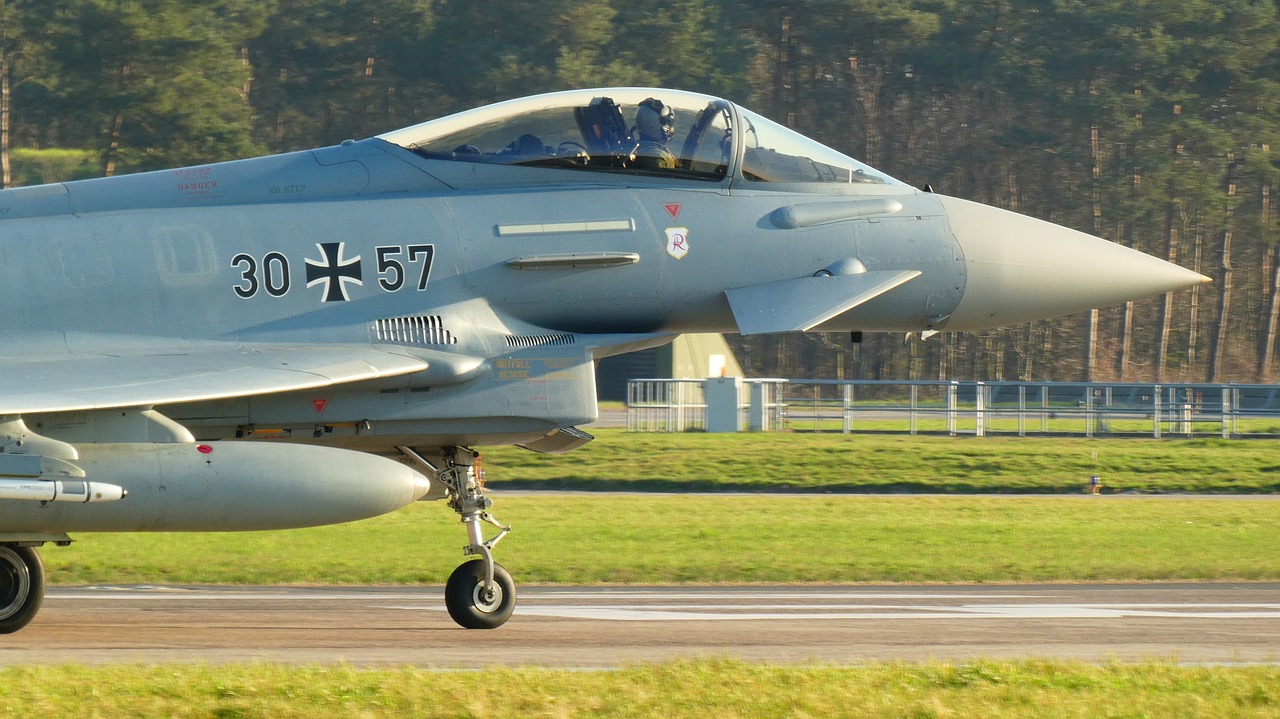
Operational Roles
The Eurofighter Typhoon is not just a fighter jet; it's a multifaceted powerhouse designed to excel in various operational roles that reflect the complexities of modern warfare. Its versatility is one of its most impressive features, allowing it to seamlessly transition between different mission types. Whether soaring through the skies in pursuit of enemy aircraft or diving down to deliver precision strikes against ground targets, the Typhoon showcases its adaptability and technological prowess.
One of the primary roles of the Eurofighter Typhoon is air superiority. In this capacity, the aircraft is engineered to dominate the skies, ensuring that friendly forces can operate without the threat of enemy interference. With its incredible speed and agility, the Typhoon can outmaneuver adversaries, making it a formidable opponent in dogfights. Pilots are trained to leverage the jet's advanced avionics and weaponry, allowing them to engage enemy aircraft effectively. The combination of its superior radar and electronic warfare capabilities means that the Typhoon can detect and neutralize threats before they even become a factor.
In addition to air superiority, the Typhoon excels in ground attack missions. Equipped with a wide array of precision-guided munitions, the aircraft can strike high-value targets with pinpoint accuracy. This capability is crucial in modern combat scenarios where minimizing collateral damage is a top priority. The Typhoon's advanced targeting systems ensure that pilots can identify and engage targets effectively, making it a vital asset for ground forces. Imagine the Typhoon as a hawk, soaring high above the battlefield, able to spot and strike with surgical precision, all while keeping the risk to civilians and friendly units at a minimum.
Moreover, the Eurofighter Typhoon is also utilized for reconnaissance missions. In this role, the aircraft gathers vital intelligence on enemy positions and movements, providing commanders with the information necessary to make informed decisions. The Typhoon's advanced sensors and data link systems enable it to relay real-time information back to command centers, enhancing situational awareness and operational planning. This capability is akin to having an eagle eye in the sky, constantly monitoring the battlefield and providing critical insights that can turn the tide of a conflict.
To summarize, the operational roles of the Eurofighter Typhoon can be categorized as follows:
| Operational Role | Description |
|---|---|
| Air Superiority | Engaging and defeating enemy aircraft to maintain control of the airspace. |
| Ground Attack | Conducting precision strikes on ground targets with minimal collateral damage. |
| Reconnaissance | Gathering intelligence and providing real-time situational awareness. |
In conclusion, the Eurofighter Typhoon's operational versatility makes it a crucial component of modern air forces, capable of adapting to various mission requirements. Its ability to perform multiple roles not only showcases its advanced design and technology but also enhances the effectiveness of military operations in an ever-evolving battlefield landscape.
- What makes the Eurofighter Typhoon unique? The Typhoon stands out due to its multirole capabilities, advanced avionics, and superior agility in combat.
- Can the Typhoon perform ground attack missions? Yes, it is equipped with precision-guided munitions for effective ground strikes.
- How does the Typhoon maintain air superiority? Through its speed, agility, and advanced radar systems, it can engage and defeat enemy aircraft efficiently.
- Is the Typhoon used for reconnaissance? Absolutely, it has advanced sensors that allow for effective intelligence gathering.
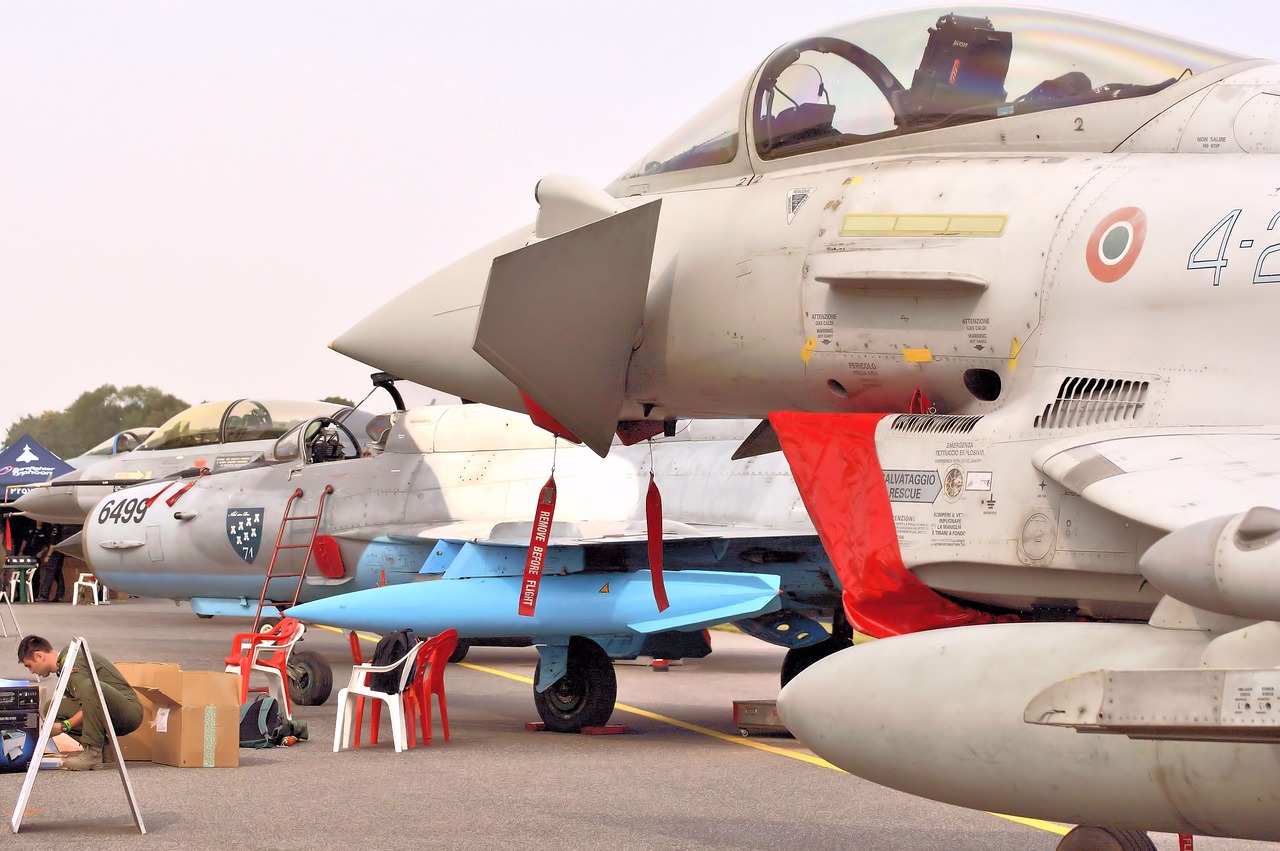
Air Superiority Missions
The Eurofighter Typhoon is not just another fighter jet; it is a **formidable force** in the realm of air superiority missions. Designed for **speed** and **agility**, this aircraft has earned its stripes by engaging enemy aircraft with unmatched efficiency. Imagine a hawk soaring high above the ground, keenly observing its surroundings while being ready to swoop down on its prey at a moment's notice. That's the Eurofighter Typhoon in action—always alert, always prepared.
In air superiority roles, the Typhoon showcases its **advanced capabilities** that make it a top contender in the skies. With a combination of cutting-edge technology and exceptional maneuverability, it can outpace and outmaneuver adversaries, ensuring control of the airspace. The aircraft’s **superior thrust-to-weight ratio** allows it to perform high-speed intercepts and complex aerial maneuvers that leave opponents in the dust. This is not just about flying; it’s about **dominating the battlefield**.
One of the key factors contributing to the Typhoon's effectiveness in air superiority missions is its **advanced avionics**. Equipped with state-of-the-art radar and sensor systems, the Typhoon can detect, track, and engage multiple targets simultaneously. The **AESA (Active Electronically Scanned Array)** radar technology enhances its situational awareness, allowing pilots to identify threats and make informed decisions swiftly. This capability is crucial when operating in hostile environments where every second counts.
Moreover, the Typhoon's **stealth features** further bolster its effectiveness. While it may not be a **stealth fighter** in the traditional sense, its design minimizes radar cross-section and enhances survivability against enemy detection systems. This means that the Typhoon can operate in contested airspaces with a lower risk of being targeted, giving it an edge in both offensive and defensive operations.
In addition to its technological prowess, the Eurofighter Typhoon is a product of **international collaboration**, which enhances its operational capabilities. Pilots from different nations train together, exchanging tactics and strategies that improve their effectiveness in air superiority missions. This cooperation fosters a sense of unity among allied forces, ensuring that they can work seamlessly together when the need arises.
To summarize, the Eurofighter Typhoon's role in air superiority missions is characterized by:
- Speed and Agility: Exceptional maneuverability to outpace and outmaneuver adversaries.
- Advanced Avionics: State-of-the-art radar and sensor systems for superior situational awareness.
- Stealth Features: Design elements that minimize radar detection risk.
- International Collaboration: Joint training exercises that enhance interoperability among allied forces.
When it comes to air superiority, the Eurofighter Typhoon is not just a participant; it is a **game-changer**. Its combination of speed, advanced technology, and collaborative training ensures that it remains at the forefront of modern aerial warfare.
1. What makes the Eurofighter Typhoon suitable for air superiority missions?
The Eurofighter Typhoon's speed, agility, advanced avionics, and stealth features make it particularly effective in air superiority roles, allowing it to dominate the skies against enemy aircraft.
2. How does the Typhoon's radar technology contribute to its success?
The AESA radar technology allows the Typhoon to detect and track multiple targets simultaneously, providing pilots with critical information to make quick and informed decisions during combat.
3. What role does international collaboration play in the Typhoon's operational effectiveness?
Joint training exercises among allied forces enhance interoperability, allowing pilots to refine tactics and strategies in realistic combat scenarios, ultimately improving mission success rates.

Ground Attack Capabilities
The Eurofighter Typhoon is not just about air superiority; it also shines in , making it a versatile player on the modern battlefield. With its ability to carry a diverse array of munitions, the Typhoon is designed to engage a variety of ground targets effectively. Imagine having a multi-tool in your toolbox; that’s what the Typhoon is for military operations. It can switch roles seamlessly, adapting to whatever the mission demands.
One of the standout features of the Typhoon's ground attack capabilities is its integration of precision-guided munitions (PGMs). These advanced weapons allow pilots to strike high-value targets with remarkable accuracy, significantly reducing the risk of collateral damage. Whether it's a tank, an enemy command post, or a supply depot, the Typhoon can deliver its payload with pinpoint precision, ensuring that the mission is accomplished without unnecessary destruction.
To illustrate the Typhoon's impressive ground attack arsenal, consider the following table that highlights some of the key munitions it can deploy:
| Munitions Type | Description | Range |
|---|---|---|
| Laser-Guided Bombs | High-precision bombs that use laser guidance for targeting. | Up to 20 km |
| Storm Shadow | Long-range cruise missile capable of striking deep behind enemy lines. | Up to 250 km |
| Brimstone | Anti-armor missile designed for rapid engagement of moving targets. | Up to 12 km |
| GBU-39 SDB | Small Diameter Bomb for precision strikes with a reduced footprint. | Up to 110 km |
Moreover, the Typhoon is equipped with advanced targeting systems that enhance its effectiveness during ground attack missions. These systems provide real-time data, allowing pilots to make informed decisions while in the heat of battle. The integration of targeting pods enables the Typhoon to identify and track targets even in adverse weather conditions, ensuring that no enemy position goes unnoticed.
In addition to precision munitions and advanced targeting capabilities, the Typhoon's speed and agility play a crucial role in its ground attack operations. With the ability to quickly engage and disengage, pilots can strike targets and evade enemy defenses effectively. This dynamic approach allows for rapid response to emerging threats, making the Typhoon an invaluable asset on the battlefield.
In summary, the Eurofighter Typhoon’s ground attack capabilities are a testament to its versatility and advanced technology. By combining precision weapons, sophisticated targeting systems, and unmatched agility, the Typhoon stands ready to take on any ground target, proving itself as a formidable force in modern warfare.
- What types of munitions can the Eurofighter Typhoon carry for ground attack missions?
The Typhoon can carry laser-guided bombs, Storm Shadow missiles, Brimstone missiles, and Small Diameter Bombs (GBU-39). - How does the Typhoon ensure accuracy during ground attacks?
It utilizes precision-guided munitions and advanced targeting systems to strike high-value targets with minimal collateral damage. - Can the Typhoon operate in adverse weather conditions?
Yes, its advanced targeting pods allow it to identify and track targets even in poor weather.

International Collaboration
The development and deployment of the Eurofighter Typhoon is a remarkable testament to the power of . This multirole fighter jet is not just a product of one nation; rather, it is the culmination of efforts from several European countries, including the United Kingdom, Germany, Italy, and Spain. This collaborative approach has fostered a shared vision that has propelled the Typhoon into the forefront of modern air combat technology.
One of the standout features of this collaboration is the pooling of resources and expertise from various nations. Each country brought unique strengths to the table, whether it be advanced engineering, cutting-edge technology, or extensive military experience. This synergy has resulted in a fighter jet that embodies the best of what Europe has to offer in aerospace innovation. For instance, while the UK focused on the aircraft's systems integration, Germany contributed significantly to its aerodynamics and performance.
Moreover, the joint development has paved the way for shared technological advancements. Countries involved have not only benefited from the Typhoon's capabilities but have also enhanced their own military-industrial bases. This has led to the establishment of a robust supply chain that supports not just the Typhoon but also future projects in aerospace and defense. The collaboration extends beyond just manufacturing; it encompasses research and development, training, and operational strategies, ensuring that all partner nations are on the same page when it comes to utilizing the Typhoon effectively.
Joint exercises play a crucial role in solidifying this collaboration. These exercises allow pilots and ground crews from different nations to train together, enhancing interoperability and refining tactics in realistic combat scenarios. For example, during multinational exercises, Eurofighter Typhoons from various countries operate as a cohesive unit, simulating real-world missions that test their communication, coordination, and combat readiness. This not only boosts confidence among allied forces but also fosters camaraderie and understanding among the personnel involved.
Additionally, the Eurofighter Typhoon's export success is another indicator of the strength of international collaboration. Several countries outside of the original partner nations have adopted the Typhoon into their air forces, further solidifying its reputation as a leading multirole fighter jet. Countries like Austria, Saudi Arabia, and Qatar have recognized the Typhoon's capabilities and have integrated it into their defense strategies. This not only enhances the Typhoon's global footprint but also reinforces the collaborative spirit that underpins its development.
- What countries are involved in the Eurofighter Typhoon program?
The primary countries involved in the Eurofighter Typhoon program are the United Kingdom, Germany, Italy, and Spain. - How does international collaboration benefit military technology?
International collaboration allows countries to pool resources, share expertise, and enhance technological advancements, resulting in superior military capabilities. - What role do joint exercises play in the collaboration?
Joint exercises enhance interoperability among allied forces, allowing them to train together and refine tactics in realistic combat scenarios. - Which countries have successfully exported the Eurofighter Typhoon?
Countries such as Austria, Saudi Arabia, and Qatar have adopted the Eurofighter Typhoon into their air forces.

Joint Exercises
The Eurofighter Typhoon's prowess is not just a product of its advanced technology; it is also significantly enhanced through with allied forces. These exercises serve as a vital platform for pilots and ground crews to collaborate, share tactics, and refine their skills in a controlled yet realistic environment. Imagine a symphony orchestra, where each musician must play in harmony to create a beautiful piece of music. Similarly, during these exercises, various air forces from different nations come together to execute complex missions, ensuring that every component works seamlessly in unison.
Joint exercises often simulate real-world combat scenarios, allowing pilots to face off against each other in mock dogfights, conduct coordinated strikes on ground targets, and practice air-to-air refueling. This level of preparation is crucial, as it builds not only technical proficiency but also trust and camaraderie among the participating forces. The ability to operate together effectively can make all the difference in a real conflict situation, where split-second decisions can lead to victory or defeat.
During these exercises, the Eurofighter Typhoon showcases its versatility and adaptability, often taking on multiple roles. For example, it might engage in air superiority missions one day and then switch to ground attack operations the next. This flexibility is key in modern warfare, where the dynamics of the battlefield can change rapidly. In fact, many of these exercises are designed to test the limits of the Typhoon’s capabilities, pushing it to perform at its best under various conditions.
Furthermore, joint exercises also provide an opportunity for the exchange of knowledge and techniques. Pilots and technicians from different countries share insights about their unique operational experiences, leading to a greater understanding of how to leverage the Typhoon’s advanced systems effectively. This collaborative approach not only enhances individual skills but also contributes to the overall effectiveness of the coalition forces.
To illustrate the importance of these exercises, consider the following table that highlights some key benefits:
| Benefit | Description |
|---|---|
| Enhanced Interoperability | Improves the ability of allied forces to work together seamlessly in joint operations. |
| Skill Development | Provides pilots with real-world training scenarios to sharpen their skills. |
| Tactical Innovation | Encourages the sharing of tactics and strategies, leading to improved operational effectiveness. |
| Strengthened Alliances | Fosters stronger relationships between participating nations, enhancing diplomatic ties. |
In conclusion, joint exercises are not merely a formality; they are a critical component of maintaining a ready and capable air force. The Eurofighter Typhoon, with its cutting-edge technology and exceptional performance, shines brightly in these collaborative efforts. As nations continue to face evolving threats, the ability to operate together effectively will be paramount, and the Typhoon stands poised to lead the charge.
- What is the Eurofighter Typhoon? The Eurofighter Typhoon is a multirole fighter jet designed for air superiority, ground attack, and reconnaissance missions.
- How does the Typhoon enhance joint operations? Its advanced avionics and weapon systems allow for seamless integration and coordination with allied forces during joint missions.
- What are some key features of the Typhoon? The Typhoon boasts advanced radar, electronic warfare systems, and a versatile armament capability, making it a formidable aircraft in various combat scenarios.

Export Success
The Eurofighter Typhoon has not only established itself as a formidable multirole fighter within the European air forces but has also made significant strides in the international market. Its export success can be attributed to a combination of advanced technology, proven performance, and the collaborative efforts of its partner nations. Countries around the globe have recognized the Typhoon's capabilities, leading to numerous contracts and agreements that have solidified its status as a leading choice among modern fighter jets.
One of the key factors contributing to the Typhoon's appeal is its versatility. The aircraft is capable of performing a wide range of missions, from air superiority to ground attack and reconnaissance. This adaptability makes it a valuable asset for countries looking to enhance their air combat capabilities. Additionally, the Typhoon's advanced avionics and weapon systems provide a level of operational effectiveness that is hard to match, allowing operators to engage in complex combat scenarios with confidence.
To illustrate the Typhoon's export success, consider the following table highlighting some of the countries that have integrated the aircraft into their air forces:
| Country | Number of Aircraft | Year of Introduction |
|---|---|---|
| United Kingdom | 160+ | 2003 |
| Germany | 140+ | 2004 |
| Italy | 100+ | 2005 |
| Spain | 70+ | 2006 |
| Saudi Arabia | 72 | 2007 |
| Kuwait | 28 | 2020 |
This table reflects just a portion of the Typhoon's global reach, demonstrating how various nations have embraced the aircraft to bolster their defense capabilities. The collaborative development model of the Eurofighter program has also played a crucial role in fostering international partnerships, enabling countries to share technology and expertise while working towards common defense goals.
Moreover, the Typhoon has participated in numerous international airshows and defense exhibitions, showcasing its capabilities to potential buyers. These events not only highlight the aircraft's performance but also provide an opportunity for the manufacturers to engage with military leaders and decision-makers from around the world. Such exposure has undoubtedly contributed to securing contracts and expanding the Typhoon's footprint in the global defense market.
In conclusion, the Eurofighter Typhoon's export success is a testament to its advanced capabilities and the collaborative efforts of the nations involved in its development. As more countries recognize the importance of modernizing their air forces, the Typhoon is likely to remain a top contender in the multirole fighter jet market for years to come.
- What makes the Eurofighter Typhoon stand out from other fighter jets? The Typhoon's advanced avionics, versatility in mission roles, and superior performance in air superiority and ground attack make it a leading choice among modern fighter jets.
- How many countries currently operate the Eurofighter Typhoon? Several countries, including the UK, Germany, Italy, Spain, Saudi Arabia, and Kuwait, have integrated the Typhoon into their air forces.
- What types of missions can the Eurofighter Typhoon perform? The Typhoon is capable of performing air superiority, ground attack, and reconnaissance missions, showcasing its adaptability to various combat scenarios.
Frequently Asked Questions
- What is the Eurofighter Typhoon?
The Eurofighter Typhoon is a state-of-the-art multirole fighter jet developed through collaboration among several European nations. It is designed for air superiority, ground attack, and reconnaissance missions, showcasing advanced technology and versatility in modern warfare.
- What are the key features of the Eurofighter Typhoon?
This aircraft is equipped with cutting-edge avionics, an advanced AESA radar system, and sophisticated electronic warfare capabilities. These features enable it to detect and engage targets effectively while maintaining high situational awareness in complex combat environments.
- How does the Typhoon perform in air superiority missions?
In air superiority roles, the Eurofighter Typhoon excels due to its incredible speed and agility. It is designed to dominate the skies by engaging enemy aircraft efficiently, ensuring the protection of friendly forces during operations.
- Can the Eurofighter Typhoon conduct ground attack missions?
Absolutely! The Typhoon is equipped with precision-guided munitions and advanced targeting systems, allowing it to strike high-value ground targets with minimal collateral damage—making it a formidable asset in any combat scenario.
- What role does international collaboration play in the Typhoon's development?
The development of the Eurofighter Typhoon is a prime example of international collaboration among European nations, leading to shared technological advancements and enhanced operational capabilities for allied forces.
- How does the Eurofighter Typhoon enhance joint operations?
Through participation in joint exercises, the Typhoon helps improve interoperability among allied forces. These exercises allow pilots to train together, refine tactics, and adapt to realistic combat scenarios, boosting overall mission effectiveness.
- What is the export success of the Eurofighter Typhoon?
The Eurofighter Typhoon has seen significant export success, with multiple countries integrating it into their air forces. This not only underscores its reputation as a leading multirole fighter jet but also enhances global defense partnerships.








